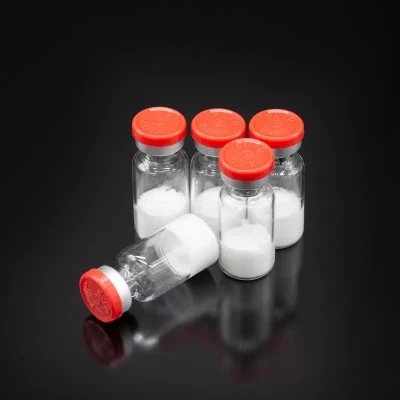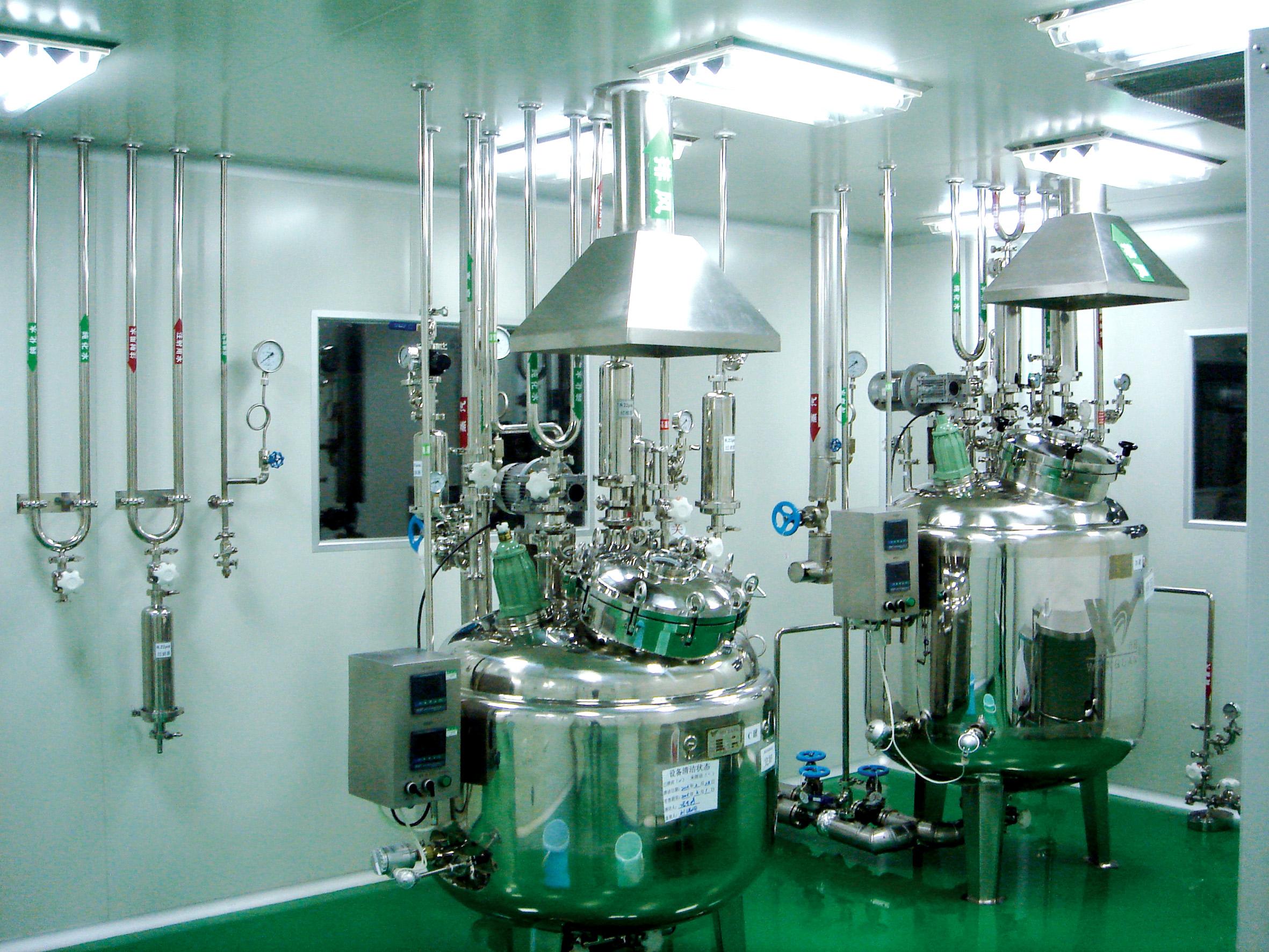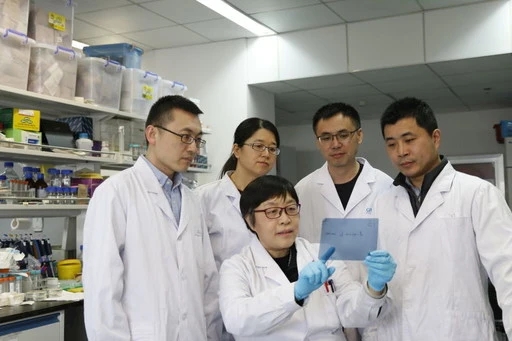Insulin-Like Growth Factor-1, commonly referred to as IGF-1 is a polypeptide hormone that belongs to the growth factor hormone family. This is a naturally produced hormone in all human beings with production primarily occurring in the liver, and to a degree in the peripheral tissues. However, synthetic versions do exist and are produced by recombinant DNA technology.
IGF-1 is a highly anabolic hormone that affects numerous areas of the human body. It also shares an important relationship with Human Growth Hormone (HGH), and on a structural basis is similar to insulin. There are several synthetic IGF-1 products on the market, but perhaps the most well-known is Increlex manufactured by Tercia INC.
Test 600xIn a therapeutic setting IGF-1 is primarily used to treat IGF-1 deficiencies. However, it is also used in patients who do not respond to HGH. With this type of therapy, the individual may very well have plenty of HGH in his system but for one reason or another is not responding to the hormone. IGF-1 treatment for this purpose is FDA approved, but it is considered very controversial by some medical professionals due to the possible metabolic effects that could occur. Then we have performance enhancement, and in recent years IGF-1 has become an important hormone in this arena. It is powerfully anabolic, will carry strong recovery properties and has become a favorite of many in bodybuilding circles.

IGF-1 Functions & Traits:
IGF-1 is a protein hormone comprised of a string of 70 amino acids. Synthetic or naturally produced the sequence is the same; there is no difference. As a functioning hormone, IGF-1 largely functions by supporting growth through the enhancement of amino acids, glucose and fatty acids. As it shares a close relationship with insulin, it can also affect your blood sugar levels. The use of IGF-1 can potentially lower your blood sugar significantly resulting in a hypoglycemic state. Due to the enhancement of fatty acids, this further creates the ability to promote body fat, which is definitely a potential downside to use. However, the upside can make it worthwhile if a well-planned diet and lifestyle is in place when supplementing with exogenous IGF-1.
IGF-1 has been shown to greatly increase the number of cells in the skeletal muscle, which in turn can lead to an enhancement in lean tissue growth. This occurs by activating the phosphatidylinositol 3-kinase (PI3K)-AKT pathway. Not only can it promote muscle growth, but by this mode of action it can also promote bone growth, and to a degree growth of our internal organs.
IGF-1 also shares a close relationship to HGH, another powerful and naturally produced hormone by all human beings. HGH, like IGF-1, is anabolic and IGF-1 is largely responsible for a large portion of the anabolic action provided by HGH. This includes two primary traits that are commonly associated with anabolism in nitrogen retention and protein synthesis. Enhanced nitrogen retention is important due to the fact that all lean tissue is comprised of approximately 16% nitrogen. When nitrogen stores fall, this can send the individual into a catabolic (muscle wasting) state. Conversely, the more nitrogen we retain the more anabolic we remain; we build and support more lean tissue. As for protein synthesis, this represents the rate by which cells build proteins, proteins representing the primary building block of lean muscle tissue. It’s not too hard to see how an enhancement in protein synthesis would be beneficial. This will not only allow you to build and support more lean tissue, but will play an integral role in the recovery process, which is precisely where true progress is made. This closely tied relationship between IGF-1 and HGH is also what leads to increases in muscle cells and the promotion of new muscle fiber growth. With IGF-1 you will now have more muscle cells (muscle cell hyperplasia) and muscle fibers (mitogenesis) to work with.
While the functions and traits of IGF-1 in an anabolic capacity are tremendous, they are ruled by the amount of protein supplied to the muscle cells. Without adequate amounts of protein, exogenous IGF-1 supplementation will be worth very little.
IGF-1 also carries important traits revolving around healing and recovery; in fact, they are quite strong. This is very apparent when we consider the hormone’s role on the production of connective tissue. IGF-1 will also improve collagen function, collagen, which is found in all connective tissue in the body. An improvement in collagen function results in stronger bones, as well as strength in the muscles for proper movement. It can even affect the skin and blood vessels in a positive way. From here, IGF-1 will also promote cartilage repair and promote enhanced bone density making it an excellent hormone in cases of needed rejuvenation and repair.
A final note on the traits of IGF-1: this hormone is known as a neuroprotector and neuropromotor, which could potentially lead to improved mental function. This factor could potentially be very beneficial to the elderly when issues of dementia arise. However, further study is still required in order to fully understand the effects, but they do appear to be promising.

Hjtc (Xiamen) Industry Co., Ltd.
Xiamen Huayongjian Biotechnology Co., Ltd.
Contacts: June & Eason
Whatsapp:+8618206063252; +8618759200098
E-mail: june@steroidpowder-hjtc.com;
eason@steroidpowder-hjtc.com
Web site:https://www.steroidpowder-hjtc.com/
http://www.safeststeroid.com/
http://www.glassviallabels.com/
https://hjtc-printing.en.made-in-china.com/
Effects of IGF-1:
The effects of IGF-1 are normally best suited for promoting off-season mass and for the physical recovery of any athlete. Very few will use this hormone in a cutting cycle, as it can have a negative effect on the individual’s metabolic rate. That’s the last thing you want when dieting, but we can make an exception. Some competitive bodybuilders are able to use IGF-1 during their contest prep and stay lean, while also maintaining more of their lean mass. It takes years of experience to be able to pull this off and not only a thorough understanding of hormones but a thorough understanding of how they affect you as an individual.
For the individual looking for raw size, there are a couple of solid options when considering IGF-1 use. Many will use it during their course of anabolic steroids, which will only enhance the rate in which lean tissue is built, as well as the amount. Others, and this is typically for more advanced bodybuilders, will use it during a bridge period. A bridge refers to a period of time in-between anabolic steroid cycles or full blown cycles. In this case, the individual will continue using a maintenance dose of testosterone and add in the IGF-1. Many who do this are also using HGH and simply continue it from their cycle that just ended into the bridge that just began. Regardless of your specific time of use, during cycle or as a bridge, the use of HGH is normally advised. IGF-1, while powerfully anabolic also has the ability to promote excess fat storage. During an off-season bulking stage, maintaining proper body fat levels is hard enough on its own, and it’s only complicated by the use of IGF-1. However, when we include HGH the metabolic boost it provides should be enough to keep things under control. Further, the synergy between these two hormones is remarkable.
What can you expect out of IGF-1 during off-season use? It’s hard to put a specific number on the amount of weight gained or specific increases in strength. As every human being is different and responds a little differently this can be hard to determine. However, we do have data to pull from, specifically a study done on IGF-1 using mice. In the study, the mice given IGF-1 a 15% increase in mass and a 14% increase in strength. Those may sound like small numbers to you, but that’s truly a remarkable increase. For example, take a 220lb bodybuilder, if his mass increases by 15% he now weighs 250lbs and that’s hardly a small increase. Of course, data obtained using mice, while often a good indicator is not always accurate. A prime example of inaccuracy would be the studies that showed strong anabolic action with the bronchodilator Clenbuterol, but when used in humans the anabolic action didn’t translate. However, while we cannot say with certainty a human being will experience a 15% increase in mass, we do know the anabolic power of IGF-1 in humans is extremely strong. Even if it’s only half of what was reported in mice that’s still a dramatic improvement.
The final effects of IGF-1 surround recovery. The hormone will improve overall recovery from training and strenuous activity, but it doesn’t end there. IGF-1 actually carries direct healing properties, not masking like a painkiller but true therapeutic healing. The use of IGF-1 can greatly reduce the total time for healing joint injuries. It has even been shown to significantly aid in the healing of tendons and ligaments. As all these areas of the body take a beating by most athletes, IGF-1 becomes extremely valuable.


Side Effects of IGF-1:
There are possible side effects of IGF-1 but compared to many hormones there really aren’t that many. Make no mistake, some of the possible side effects of IGF-1 can be concerning, but as with most hormones there is hope. The most common side effect of IGF-1 is hypoglycemia. Clinical data has shown that more than 40% of all those receiving IGF-1 therapy have experienced hypoglycemia at one level or another. Of those who have gone into a hypoglycemic state, 7% have experienced severe cases with approximately 5% experiencing a hypoglycemic seizure. Without question a seizure does not sound too appealing, and if you’ve ever experienced hypoglycemia that alone is something you’ll want to avoid. Thankfully, avoiding a hypoglycemic state when using IGF-1 is one of the easiest things to avoid in the world; in fact, if it occurs it’s your own fault. Before administering your IGF-1 you should consume simple sugars each and every time along with an adequate amount of food, specifically protein and a mixture of simple and complex carbohydrates. This should occur approximately 15-20 minutes before you administer your IGF-1. Once injected, if hypoglycemia symptoms begin to show, immediately consume more simple sugars and continue to consume them until the symptoms go away. The common symptoms of hypoglycemia include:
Dizziness
Drowsiness
Hunger (often extreme)
Depression
Sweating
Palpitations
Tremors
Headache
Slurred Speech
Inability to Concentrate
Anxiety
Abnormal Behavior
If the symptoms of hypoglycemia begin to occur immediately consume fast acting carbohydrates such as candy bars, or any type of sugar filled food or a carbohydrate drink or juice; grape juice is a fantastic choice. If ignored, this can and in many cases will lead to severe hypoglycemia, which has the potential to be fatal. Full blown severe hypoglycemia can lead to severe disorientation, seizure and unconsciousness, but as discussed there is no reason for this to occur if IGF-1 is used properly.
Despite it being tremendously easy to avoid, hypoglycemia is the most common side effect of IGF-1 use, but there are others to consider. Some may experience joint pain or discomfort despite it typically having a positive impact on joints. Some reports have indicated tonsil growth, which can lead to the individual becoming an extreme snorer. Pronounced organ growth has also been noted in some patients, particularly the kidneys and spleen. This makes responsible use very important, and it becomes more important when we consider cholesterol. IGF-1 can increase cholesterol levels; however, this is very manageable with a healthy diet. We must, however, keep in mind that many who use it are doing so with anabolic steroids, which can also skew cholesterol levels. In order to protect your cholesterol levels, a healthy diet and lifestyle is imperative. The individual’s diet should be rich in omega fatty acids. Daily fish oil supplementation is advised. The individual should also limit saturated fats, as well as simple sugars. Granted, you will need simple sugars with your IGF-1 use, specifically timed around your use, but other than this period they should be severely limited. It is also advised that you incorporate plenty of cardiovascular activity into your daily routine. Some may also find a cholesterol antioxidant supplement to be beneficial.
IGF-1 may also thicken facial soft tissue. High doses of the hormone have been linked to facial structure growth, especially in the jaw and forehead with possible growth in the hands, feet and elbows.
The final side effect of IGF-1 is a sore or bruised injected area. The hormone is administered subcutaneously and such injections often leave a bruise. Some data has also suggested that localized adipose tissue may increase at the injected area, the precise opposite effect that occurs with HGH use. How strong is this effect? It’s a bit inconclusive, but it does appear to be possible, which would lead the individual to necessarily rotate his injection sites.
A final note: those with cancer should not use IGF-1. This hormone can increase the structural nature and strength of all cells in the human body, including those that are cancerous. If you have cancer or potential reoccurring cancer, you should not use the hormone.

IGF-1 Administration:
IGF-1 doses and specific protocols of use is a bit of a controversial topic in both the medical and performance enhancement community. In a therapeutic setting, IGF-1 doses will normally fall in the 40-80mcg ranges and may be given 1-2 times per day. This is undoubtedly a large, very large dose, and it can be hard to control for some when we consider hypoglycemia. Most physicians will not have the individual start above 40mcg and levels will be monitored closely. Dosing may be increased by 20mcg if needed but will not surpass 120mcg for any reason as this will be extremely difficult to even impossible to control regarding hypoglycemia.
In a performance setting, 50-60mcg per day is very common, but it’s also often overkill. It will not take a lot of IGF-1 to produce phenomenal results if the individual is eating enough food and using anabolic steroids. Add in the recommended HGH use with your IGF-1 and the results will be remarkable. Most individuals could easily start with 15mcg per day once per day and slightly increase the dose if needed, but this is an excellent starting point and will be all the IGF-1 many ever need.
Then we have total use. In a performance setting, IGF-1 will be used for 2-4 weeks flowed by 2-4 weeks of no IGF-1 repeating as many times as necessary or desired. Many, as briefly discussed early on will continue their IGF-1 use past their anabolic steroid cycle into a bridge phase where a low dose of testosterone and HGH is maintained. This is, however, only something the hardcore and experienced hormone user will undertake. If you are coming off cycle and entering the PCT phase, IGF-1 use is not recommended as the promotion of excess body fat will be a great risk.

Availability of IGF-1:
IGF-1 was for years a very difficult hormone to find, but thanks to the internet and many research labs you can easily obtain all the IGF-1 you could ever want. Increlex will be the most well-known and purest form of IGF-1 or what we might call the perfect replica of the naturally produced hormone. It is a perfect copy of the 70 amino acid strain. However, increasingly popular in performance enhancing circles is Lr3IGF-1 (Long R3 Insulin-Like Growth Factor-1). Lr3IGF-1 is an 83 amino acid analog of human IGF-1. It is comprised of IGF-1 sequence with an Arg substitution at the 3rd position, as well as an added 13 amino acid peptide. This composition actually makes Lr3IGF-1 2-3 times more potent than standard IGF-1 When using this form, this does not change the activity of the IGF-1 hormone in anyway; the traits, functions, effects and side effects all remain the same. The only thing that differs is the overall potency; you may be able to get a little more out of the Lr3 version.
Lr3IGF-1 is also the only IGF-1 most athletes will have access to. It can be found through some large internet based steroid suppliers, companies that specialize in peptide hormones and through numerous research labs. As for Increlex, this can be harder to find on the black market and is normally only available with a prescription. While a prescription in the U.S. is possible, it will be extremely difficult to obtain. In Europe, you may find Increlex is much easier to obtain, either way most will have no trouble finding Lr3IGF-1.

Buy IGF-1 Online- Warning:
You can easily buy IGF-1 online; in fact, it’s the only way most will be able to get their hands on it. However, if you buy IGF-1 through a steroid supplier, despite it not being a controlled substance in the U.S. you are breaking the law. The law can vary from one country to the next greatly but most countries will frown heavily on any type of online purchase. The exception would be a purchase from a research lab. You can buy IGF-1 online from a research lab legally so as long as it is sold and purchased for research only. This is similar to the law that revolves around SERM’s, AI’s and other various non-controlled substances. This is a loophole in the law, but it is not as safe as many tend to believe. If the individual is questioned by law enforcement regarding his purchase it is up to him to prove it is for research, the burden of proof is on him, not law enforcement. In recent years, there have been instances where law enforcement has claimed the research claim was nothing but a sham and arrest have been made. You must tread with caution if you are going to make such a purchase.
If you decide to buy IGF-1 online, you will find the hormone is rarely counterfeited and should be fairly affordable. You will also find many who sell it offer IGF-1 derivatives or fragments; stay away from these products. They may not be dangerous, but they are largely a waste of your money. If you’re going to buy IGF-1 stick with true IGF-1 or Lr3IGF-1.
Due to the often strict and more often than not extremely strange laws that revolve around hormones, you are encouraged to tread lightly and do a lot of digging before you make a purchase. You are also encouraged to visit the sponsors here at https://www.steroidpowder-hjtc.com/. The sponsors here at https://www.steroidpowder-hjtc.com/ can provide you with high quality anabolics, not only without a prescription but also without the fear of any legal consequence.

IGF-1 Reviews:
IGF-1 is a fantastic hormone, but it is truly not for everyone. This is not a hormone for a new individual to the world of performance enhancement. Such an individual may find it difficult to use, he may find body fat piles on quickly, and in reality he really shouldn’t need it. IGF-1 should not be used until a true benefit can be obtained, which will normally be when the individual has already seen a lot of advancement in his physique. At this stage, the individual is also strongly encouraged to include HGH with his use. Not only will this produce better results, but it will ensure his body fat does not get out of control. The only exception to this rule pertaining to when to use is if you suffer from an IGF-1 deficiency, which will be rare for most.
Our hot selling items:
|
Popular Steroid |
||
|
1 |
Testosterone Enanthate |
CAS: 315-37-7 |
|
2 |
Testosterone Acetate |
CAS: 1045-69-8 |
|
3 |
Testosterone Propionate |
CAS: 57-85-2 |
|
4 |
Testosterone Cypionate |
CAS: 58-20-8 |
|
5 |
Testosterone Phenylpropionate |
CAS: 1255-49-8 |
|
6 |
Testosterone Isocaproate |
CAS: 15262-86-9 |
|
7 |
Testosterone Decanoate |
CAS: 5721-91-5 |
|
8 |
Testosterone Undecanoate |
CAS: 5949-44-0 |
|
9 |
Sustanon 250 |
|
|
10 |
1-Testosterone Cypionate |
|
|
11 |
Turinabol |
CAS: 855-19-6 |
|
12 |
Oral Turinabol |
CAS: 2446-23-3 |
|
13 |
Stanolone |
CAS: 521-18-6 |
|
14 |
Nandrolone Decanoate (DECA) |
CAS: 360-70-3 |
|
15 |
Nandrolone Cypionate |
CAS: 601-63-8 |
|
16 |
Nandrolone Phenypropionate (NPP) |
CAS: 62-90-8 |
|
17 |
Boldenone Acetate |
CAS :2363-59-9 |
|
18 |
Boldenone Undecylenate (Equipoise) |
CAS: 13103-34-9 |
|
19 |
Drostanolone Propionate (Masteron) |
CAS: 521-12-0 |
|
20 |
Drostanolone Enanthate |
CAS: 472-61-1 |
|
21 |
Methenolone Acetate (Primobolan) |
CAS: 434-05-9 |
|
22 |
Methenolone Enanthate |
CAS: 303-42-4 |
|
23 |
Trenbolone Acetate |
CAS: 10161-34-9 |
|
24 |
Trenbolone Enanthate |
|
|
25 |
Trenbolone Hexahydrobenzyl Carbonate |
CAS: 23454-33-3 |
|
26 |
Epiandrosterone |
CAS: 481-29-8 |
|
Oral Steroid |
||
|
27 |
Anavar |
CAS: 53-39-4 |
|
28 |
Anadrol |
CAS: 434-07-1 |
|
29 |
Winstrol |
CAS: 10418-03-8 |
|
30 |
Dianabol |
CAS: 72-63-9 |
|
31 |
Superdrol |
CAS: 3381-88-2 |
|
32 |
Tamoxifen Citrate (Nolvadex) |
CAS: 54965-24-1 |
|
33 |
Clomiphene Citrate (Clomid) |
CAS: 50-41-9 |
|
34 |
Toremifene Citrate (Fareston) |
CAS: 89778-27-8 |
|
35 |
Femara |
CAS: 112809-51-5 |
|
36 |
Aromasin |
CAS: 107868-30-4 |
|
37 |
Proviron |
CAS: 1424-00-6 |
|
38 |
Arimidex |
CAS: 120511-73-1 |
|
40 |
Cabergoline (Caber) |
CAS: 81409-90-7 |
|
41 |
Finasteride |
CAS: 98319-26-7 |
|
42 |
Dutasteride |
CAS: 164656-23-9 |
|
SARM |
||
|
43 |
Ostarine (MK-2866) |
CAS: 841205-47-8 |
|
44 |
Cardarine (GW-501516) |
CAS: 317318-70-0 |
|
45 |
Andarine (S4) |
CAS: 401900-40-1 |
|
46 |
Ligandrol (LGD-4033) |
CAS: 1165910-22-4 |
|
47 |
Ibutamoren (MK-677) |
CAS: 159752-10-0 |
|
48 |
RAD140 |
CAS: 118237-47-0 |
|
49 |
SR9009 |
CAS: 1379686-30-2 |
|
50 |
YK11 |
CAS: 431579-34-9 |
|
Sex Enhancement |
||
|
51 |
Avanafil |
CAS: 330784-47-9 |
|
52 |
Vardenafil |
CAS: 224785-91-5 |
|
54 |
Tadalafil |
CAS: 171596-29-5 |
|
56 |
Vardenafil Hydrochloride |
CAS: 431579-34-9 |
|
57 |
Hydrochloride |
CAS: 431579-34-9 |
|
58 |
Yohimbine Hydrochloride |
CAS: 65-19-0 |



Post time: Jan-16-2022